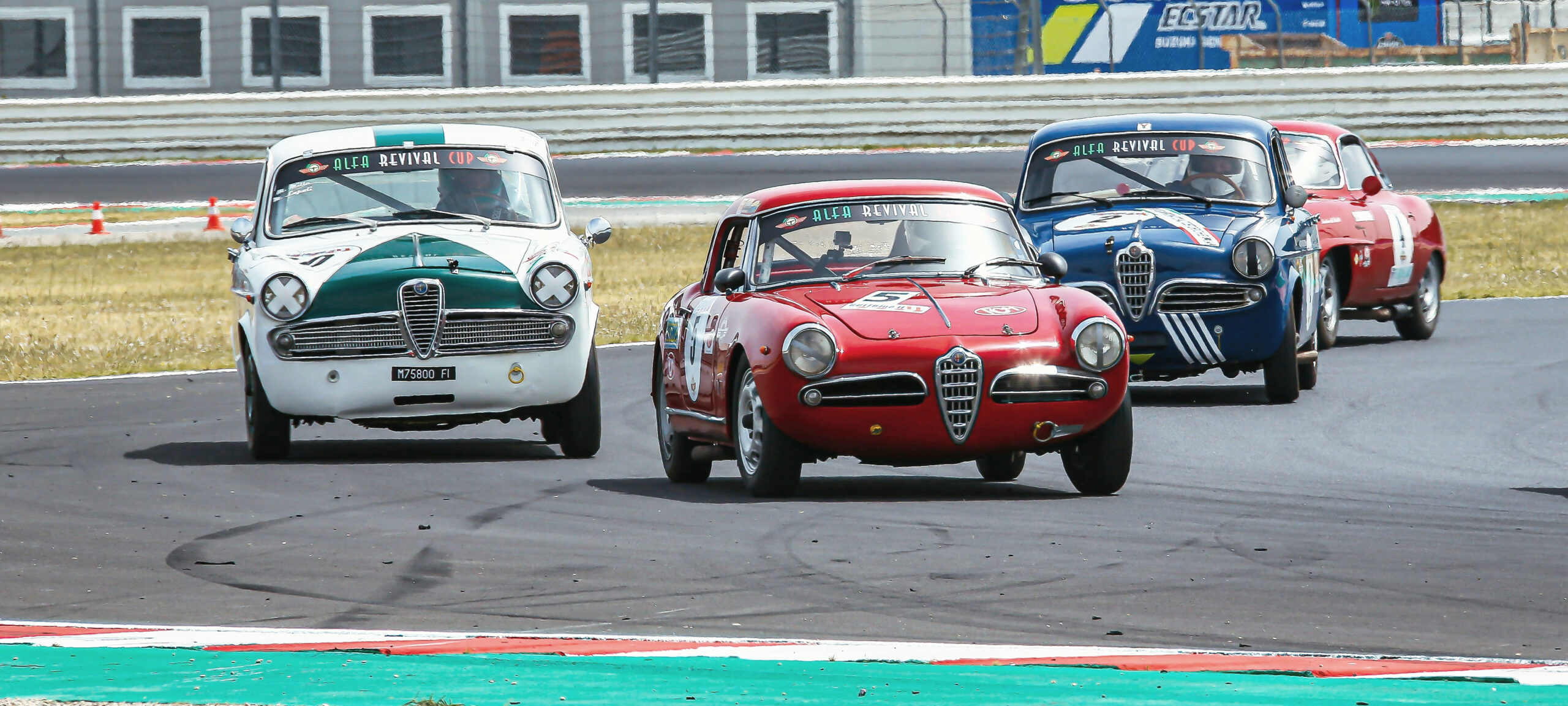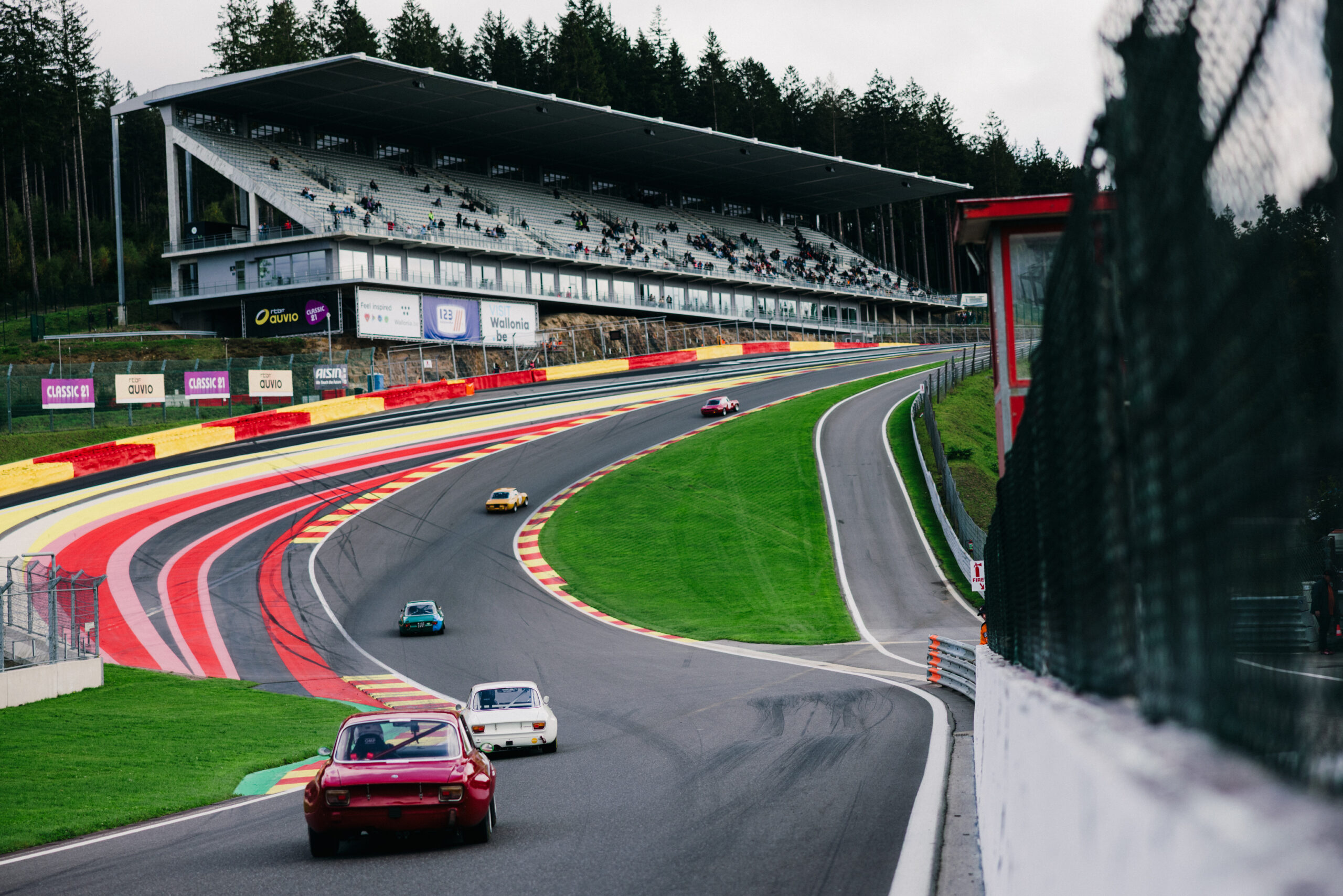July 05, 2024: At the dawn of the economic boom Alfa Romeo became the leader in mass motorisation by focusing on building “medium sized” cars in terms of dimensions and engine capacity, but with remarkable performance and sporting character. The aim was to win over a new target audience looking for driving pleasure at a fair price. 70 years after launching the Sprint 1300, the Alfa Revival Cup is celebrating the Giulietta dynasty: the car that enchanted Italians.
The Giulietta inherited the technical aspects of the “1900”: independent front suspension and a rigid axle at the rear, but with a model that surpassed anything that had been seen before. The massive commercial success took the Portello factory by surprise, which until then had only been able to assemble 20 cars a day. The Giulietta brought about the long-awaited industrial turning point on the Alfa Romeo assembly line.
The technical quality of the cars from the Sprint 1300 onwards was the results of the experience Alfa Romeo had gained during the war in processing metal alloys to build aeroplanes. This know-how led to the widespread use of aluminium in the main components, such as the cylinder head and the engine block, the gearbox, the differential and the brake drums to ensure lightness and resistance.
Love at first sight
The genesis of the Giulietta was the project code “Tipo 750″, which came to fruition thanks to a team of very high profile professionals with the financial support of many people who had bought IRI bonds. Construction of the “1300” engine was entrusted to Giuseppe Busso, while Orazio Satta Puliga focused on the chassis and frame. The Centro Stile (Style Centre) led by Giuseppe Scarnati designed the timeless line of the coupé and sedan body styles, and the Austrian Hruska, (the same as the Volkswagen Beetle), took care of planning the production lines. After significant investment and intense development Alfa Romeo launched the Giulietta “Sprint 1300” version at the 36th Edition of the Turin Motor Show on the 21st of April 1954. It was a coupé model built by Bertone with a streamlined shape, a 2+2 seater configuration and a 65hp engine. Due to a developmental delay, in particular a noise while running, the Sprint was launched a whole year before the Sedan.
The public response was enthusiastic: the excellent mechanical qualities, brilliant performance, low fuel consumption, simple elegance of the design and the affordable price made it a success. The Portello factory and Bertone were inundated with an unexpected volume of orders which increased waiting times. At full capacity 200 cars left the assembly line every day.
A breed of excellent cars
Starting with the brilliant mechanical design of the Giulietta Sprint, Alfa Romeo was able to build a range of effective and wonderful models, each one becoming a point of reference on the market it was competing in. The Giulietta Spider designed by Pininfarina, was launched in the summer of 1955 and embodied the perfection of the Italian 1950s lifestyle. The «Sprint Veloce» built by Bertone and the “Spider Veloce”, lightened and particularly popular with race car drivers, were produced from 1956 until the end of 1959, then replaced by the “Sprint Speciale” (designed by Scaglione), officially launched in June 1959 in Monza, and the SZ (Sprint Zagato), which started rolling off the assembly lines at the end of 1959. There was also a station wagon version called the Promiscua.
From 1954 to 1965 177,690 chassis were produced for all the models as testimony to the success and charm that has not shown signs of diminishing over time. A car built by those who loved driving for those that wanted to experience the same pleasure.
The origin of the name
There is no doubt that the name “Giulietta” comes from the legendary story of the two lovers from Verona, also in continuity with the second part of the name of the brand.
However, the initial idea is unknown: unofficially it is attributed to the engineer-poet Leonardo Sinisgalli, a Finmeccanica consultant for image and advertising in the 50s and 60s. Others believe that it came from an intuition by Sinisgalli’s partner the Baroness and poet Giorgia De Cousandier.
Engineer Gian Paolo Garcea long-time head of the Alfa Romeo Reparto Esperienze (Experience Services), many times emphasised that the origin of the name was very different. At the Salone di Parigi in around 1950, the same engineer and some colleagues were invited to a nightclub. Here they were entertained with poetry and jokes from a Russian exile who after taking a look at the group addressed them by saying: “You are eight Romeos and not one Juliet!”
Races
All versions of the Giulietta were used in Sport, Gran Turismo, Super Turismo and Rally races. Three models in particular made motorsport history: the Sprint 1300, the SZ and the T.I.
At the start of the Mille Miglia in 1955 there were a total of 34 different Giulietta Sprint cars. The best time was by Albino Buticchi who reached the finish line in thirty second place and came third in the Gran Turismo up to 1300 cm3 category .
The new, high performance Veloce version with an engine tuned up to 90hp and the bodywork lightened by 70 kg came in third in the GT up to 1300 cm3 category in the 1956 Mille Miglia. Sgorbati-Zanelli, first place and eleventh overall, followed by Becucci-Cazzato (twelfth) and Bonnier-Boesen (fifteenth).
The Giulietta SZ was built by chance: the Milanese racer Massimo Leto di Priolo damaged his Giulietta Sprint Speciale in a race and decided to entrust reconstruction to the Elio Zagato body shop. Following its iconic “egg-shaped” lines Zagato smoothed the corners to improve its aerodynamics. The results were excellent and Leto di Priolo won the 1956 Coppa Intereuropa in Monza at the wheel of this new creation. On the heels of this result other gentleman drivers turned to the Milanese body shop which between 1960 and 1963 produced 210 models. The SZ won the Coupe Des Alpes in 1960 and in 1963 and the Campionato Internazionale Gran Turismo in 1961, thanks to victories in the Coppa Ascari, Coppa Belmonte, Coppa di Sciacca and Coppa GT in Monza.
The T.I. becomes a best seller
The Giulietta T.I. (Turismo Internazionale) launched in Monza on the 2nd of September 1957 and offered at a price of 1,525,000 lire, surpassed the basic version in sales thanks to a more powerful engine and more refined interiors. The T.I. met the favour of the sporting and racing public becoming the queen of speed and endurance races on the track and rallies and uphill races, achieving victories and records everywhere. Just like the Giulietta Berlina, the T.I: benefitted from two restylings in 1959 and 1961 which brought minor innovations, especially aesthetic and ergonomic ones, with an improvement in finish and driving comfort.
The engine was the real jewel of the T.I.: with a higher compression ratio combined with the use of a 35 mm twin carburettor and four cylinders of 1290 cm3 providing 65 horsepower (which became 74 in 1961), compared to 53hp in the original version.
It tipped the scales at 908 kg in running order: the reduced weight allowed for notable performance combined with high efficiency. Maximum speed was 155 km/h and average fuel consumption at 80 km/h, was just 8.6 litres/100 km. Well over 92,728 models left the Portello assembly lines until 1964 when production stopped passing the baton to the Giulia.
The T.I. won the 1958 “Tour de Corse” with Madame Aumas and Madame Wagner behind the wheel. Then, in 1960, another T.I. succeeded to win the Rallye de Geneve with the crew set up by De Lageneste and Greder.
Enjoy a selection of historical and original shoots of all the versions of the Giulietta
Photos courtesy of Archivio Storico Alfa Romeo – Stellantis Heritage



